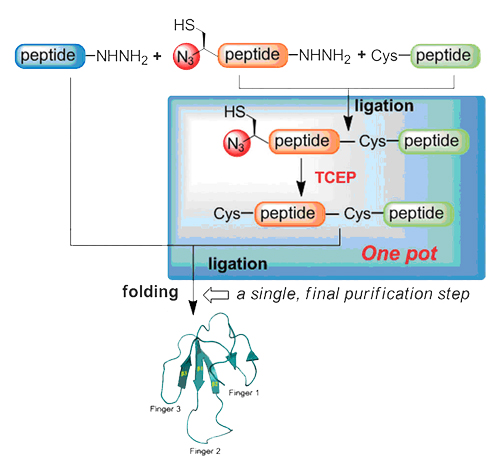Apr 04,2014|By
Animal toxins are known to target a wide variety of receptors and ion channels with high affinity and specificity, and important pharmacological tools for studying ion channel structure–function relationships. Mambalgin-1 is a cysteine rich, 57 residue polypeptide, isolated from the venom of black mamba snakes, and be demonstrated to abolish pain through inhibition of acid-sensing ion channels (ASICs) either in central or peripheral neurons, and this was achieved without the side effects associated with traditional opioid drugs.
Researchers from the lab of Chang-Lin TIAN (High Magnetic Field Laboratory,CAS) and Yimin LI (Hefei University of Technology), achieved an efficient one-pot chemical synthesis of snake venom toxin Mambalgin-1 using an azide-switch strategy combined with hydrazide-based native chemical ligation. Electrophysiological study confirmed that the synthetic Mambalgin-1 was functional and correctly folded. NMR solution structure determination revealed a three-finger toxin family structure.
 |
|
the synthetic route and strategy of Mambalgin-1 and its 3D solution structure |
Attachments Download: